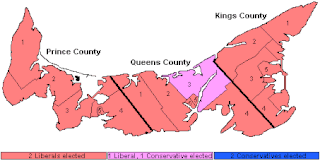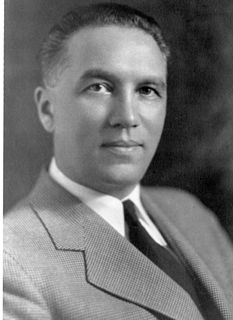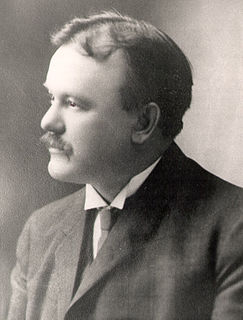| ||||||||||||||||||||||||||||||||||
All 30 seats in the Legislative Assembly of Prince Edward Island 16 seats needed for a majority | ||||||||||||||||||||||||||||||||||
|---|---|---|---|---|---|---|---|---|---|---|---|---|---|---|---|---|---|---|---|---|---|---|---|---|---|---|---|---|---|---|---|---|---|---|
| ||||||||||||||||||||||||||||||||||
| ||||||||||||||||||||||||||||||||||
The 1951 Prince Edward Island general election was held in the Canadian province of Prince Edward Island on April 26, 1951. [1]
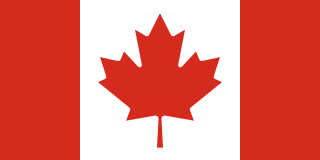
Canada is a country in the northern part of North America. Its ten provinces and three territories extend from the Atlantic to the Pacific and northward into the Arctic Ocean, covering 9.98 million square kilometres, making it the world's second-largest country by total area. Canada's southern border with the United States, stretching some 8,891 kilometres (5,525 mi), is the world's longest bi-national land border. Its capital is Ottawa, and its three largest metropolitan areas are Toronto, Montreal, and Vancouver. As a whole, Canada is sparsely populated, the majority of its land area being dominated by forest and tundra. Consequently, its population is highly urbanized, with over 80 percent of its inhabitants concentrated in large and medium-sized cities, with 70% of citizens residing within 100 kilometres (62 mi) of the southern border. Canada's climate varies widely across its vast area, ranging from arctic weather in the north, to hot summers in the southern regions, with four distinct seasons.
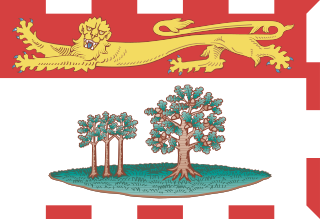
Prince Edward Island is a province of Canada consisting of the Atlantic island of the same name along with several much smaller islands nearby. PEI is one of the three Maritime Provinces. It is the smallest province of Canada in both land area and population, but it is the most densely populated. Part of the traditional lands of the Mi'kmaq, it became a British colony in the 1700s and was federated into Canada as a province in 1873. Its capital is Charlottetown. According to the 2016 census, the province of PEI has 142,907 residents.
Contents
The governing Liberals of Premier J. Walter Jones held on to their majority in the Legislature over the opposition Progressive Conservatives led by Reginald Bell, who was elected leader of the party in 1950. Both parties kept the same number of seats they earned in the previous election, though eight seats did change hands.
In Canada, a premier is the head of government of a province or territory. Though the word is merely a synonym for prime minister, it is employed for provincial prime ministers to differentiate them from the Prime Minister of Canada. There are currently 10 provincial premiers and three territorial premiers. These persons are styled The Honourable only while in office, unless they are admitted to the Queen's Privy Council for Canada, in which case they retain the title even after leaving the premiership.

John Walter Jones was a politician and farmer in Prince Edward Island, Canada. An agronomist, he was instrumental in introducing the potato crop to the island, which was to become a staple of the economy. In 1935, he received the King George V medal as the best farmer in the province.
A majority government refers to one or multiple governing parties that hold an absolute majority of seats in legislature. This is as opposed to a minority government, where the largest party in a legislature only has a plurality of seats.
The democratic socialist Co-operative Commonwealth Federation fell back from their previous high in 1947, losing over half of their vote. This would be the last election contested by the CCF or any third party in provincial PEI elections until the CCF's successor, the New Democratic Party, ran in by-elections in 1972.
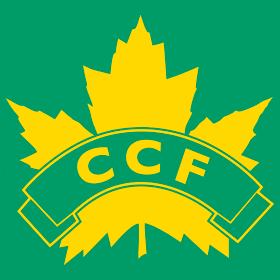
The Co-operative Commonwealth Federation (CCF) was a social-democratic and democratic socialist political party in Canada. The CCF was founded in 1932 in Calgary, Alberta, by a number of socialist, agrarian, co-operative, and labour groups, and the League for Social Reconstruction. In 1944, the CCF formed the first social-democratic government in North America when it was elected to form the provincial government in Saskatchewan. In 1961, the CCF was succeeded by the New Democratic Party (NDP). The full, but little used, name of the party was Co-operative Commonwealth Federation (Farmer-Labour-Socialist).
The New Democratic Party of Prince Edward Island is a social-democratic political party in the Canadian province of Prince Edward Island, and a branch of the federal New Democratic Party (NDP).
This election featured the first female candidate for office, Hilda Ramsay, who came in third while running for the CCF as Councillor in 3rd Prince. [2]

3rd Prince was an electoral district in the Canadian province of Prince Edward Island, which elected two members to the Legislative Assembly of Prince Edward Island from 1873 to 1993.

